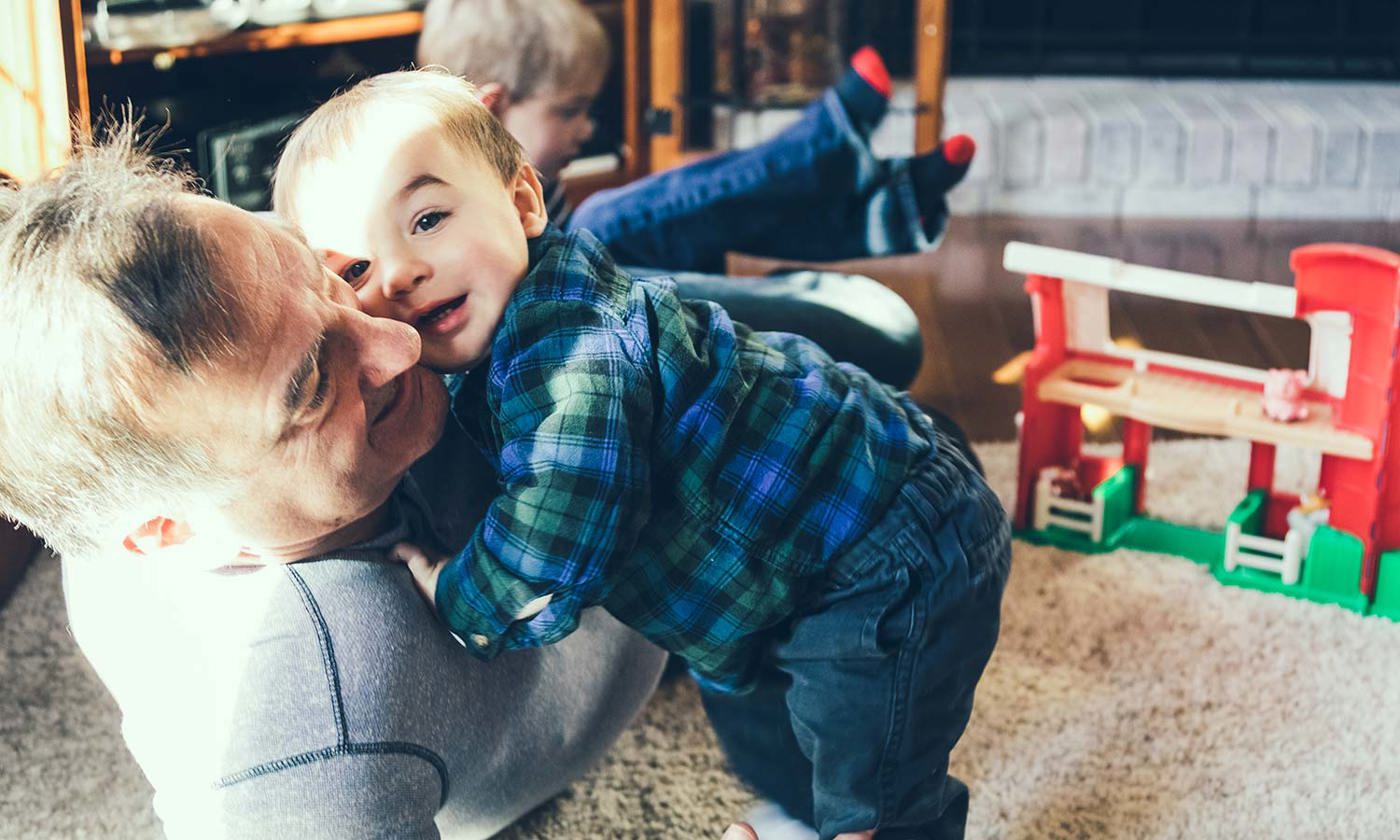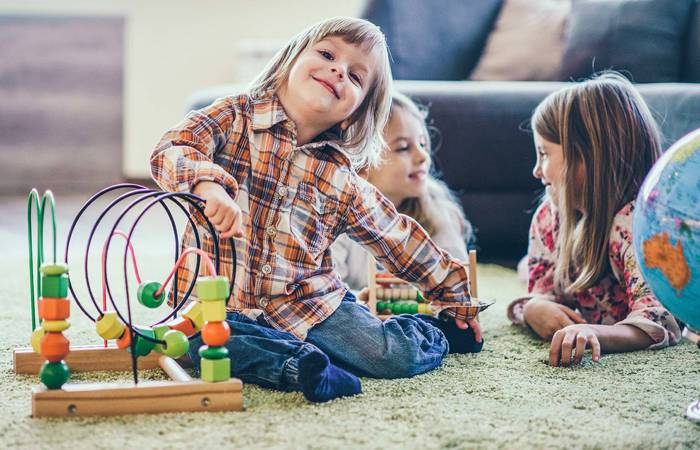Like what you see?
Sign up to receive more free parenting advice.
Thank you for subscribing to our newsletter!
Lifestyle

Credit: iStock.com/patrickheagney
They may be at opposite ends of the cycle of life, but our oldest and youngest community members appear to have more in common than it first seems.
Researchers from Griffith University set out to explore how to get older people (including aged care residents) and young children to interact more broadly while in care.
"The Intergenerational Care Project is a comprehensive look at as many possible aspects of intergenerational care delivery as we possibly can," says Dr Jennifer Cartmel, a senior lecturer at Griffith University and one of the project’s lead researchers.
Going wide and deep means researchers aren't only looking at the engagement and opportunities to build relationships between children and older people, but at the wider implications these kinds of interactions can have.
“We know there are lots of activities in this space but there hasn't been research that has looked widely and deeply at the sustainability of it, the health benefits or some of the organisational aspects involved," Dr Cartmel says.
Upswing in intergenerational playgroups
One of the activities Dr Cartmel and her colleagues have seen is an upswing in intergenerational playgroups, where aged care residents and young children and their parents meet weekly to play and interact.
While there are no statistics on the numbers of intergenerational playgroups which exist across Australia, the CEO of Playgroup Australia, Fiona May, says the playgroup movement sees these types of activities as offering benefits for all.
"They are wonderful for families that don't have grandparents available. For some young children it might be their only opportunity to interact with people who are from a different generation to them or their parents," Fiona says.
Two different models of intergenerational care
Back at Griffith University, researchers are investigating two different models of intergenerational care to understand the pros and cons of each.
In one model, activities are held in an aged care facility but the children are based off-site or vice versa. The second considers sites where aged care facilities and childcare centres are co-located on the same piece of land.
In terms of the latter, to date the decision to co-locate both facilities has not been due to a conscious coupling of our oldest and youngest demographics.
Instead, childcare centres have sometimes been located on the same land as an aged care facility to meet the childcare needs of workers at the aged care centre. In other cases, the organisation has simply had land available and built one site near the other because it made financial sense.
However, depending on the researchers’ findings (final results will be available in early 2019) this may all change, and a more deliberate pairing could lie ahead.
They are wonderful for families that don't have grandparents available. For some young children it might be their only opportunity to interact with people who are from a different generation to them or their parents.Fiona May
Stay up to date with the latest news and articles from First Five Years
Thank you for subscribing to our newsletter!
Early observations from the groups
While no formal data has been analysed yet, the learning program component Dr Cartmel has been involved in has already made some interesting discoveries.
"We've been looking at which experiences or learning activities offer the most engagement for each group," says Dr Cartmel, noting that the Early Years Learning Framework commonly used in childcare centres has formed much of the study’s educational basis.
Researchers have been experimenting with a number of possibilities including lots of music, dance, singing, arts, crafts, and telling of stories.
"We've noticed that music and rhythm activities have really been important," she says.
"We’ve also had better engagement where an activity involves a lot of freedom for both participants: they choose what they do rather than completing something like a craft activity that has been selected for them," Dr Cartmel says.
In many cases, keeping things simple seems to be most effective.
“If the activities require really complex cognitive skills they haven't been as well received, unless there's a really obvious and immediate outcome that both the young and older participant can see," Dr Cartmel says.
What doesn't work has also been important to researchers, as this information will help organisations interested in intergenerational experiences tailor activities to best effect.
"We've had some services we’ve worked with who have already changed the way they engage with their elderly community. One group used to have the children visit and 'perform' for their aged care residents. Now they have changed the strategy so that the visits are more relationship based and intentional," Dr Cartmel says.
It is this building of relationships that has been an obvious success story for the children participating in intergenerational activities.
“We've seen some really strong relationships develop in as little as four weeks – I would have thought it would take longer than that," Dr Cartmel says.
When Dr Cartmel spoke to children who had participated in the project’s 16-week trial, one of her greatest observations was the joy that each group got out of it.
"The generations really enjoy each other's company. The opportunity to develop a purposeful relationship has been important. Each has been prepared to spend the time together," she says.
Practical advantages of intergenerational playgroups
While Fiona May at Playgroup Australia agrees that the intergenerational playgroups she has sat in on have been "delightful experiences" where it was obvious all involved really valued the opportunity, she also sees additional benefits for the children participating.
"One of the nice things about intergenerational playgroups is that elderly residents often don't move around a lot, so the children are able to control who they approach and how," she says.
There are also some purely practical advantages from the perspective of parents of young children.
"Aged care facilities are already very safe environments where everything is very carefully managed, for example fences or doors can't easily open. One mother of twins commented to me that it was so safe for her children to play in this environment," Fiona says, noting that playgroups sometimes struggle to find venues that are safe and affordable, making aged care facilities a wonderful opportunity for playgroup organisers.
“We would love to see more of it,” Fiona says.
Further resources:
- Playgroup Queensland Intergenerational Playgroups
- Playgroup WA (Inc) Intergenerational Activities Service
- Playgroup SA Intergenerational Playgroups
- Playgroup Victoria – Starting Playgroups in Aged Care Facilities
- ACT Playgroups Association Intergenerational Playgroups
- Playgroup NSW Intergenerational Playgroup







